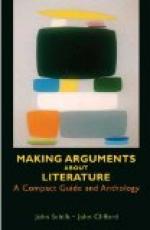32. Indirect Evidence. The term “indirect evidence” may be used for all evidence as to fact in which reasoning consciously plays a part. Without it we should be helpless in large regions of our intellectual life, notably in science and history, and constantly in everyday life. Clearly the line between direct and indirect evidence is vague and uncertain; it is one of the first things learned in psychology that our perceptions and judgments of things about us are almost never based exclusively on the testimony of our senses, and that we are all the time jumping to conclusions from very partial observations.
Professor Muensterberg gives the following example from his own experience of this unintentional substitution of indirect evidence for direct:
Last summer I had to face a jury as witness in a trial. While I was with my family at the seashore my city house had been burglarized and I was called upon to give an account of my findings against the culprit whom they caught with part of the booty. I reported under oath that the burglars had entered through a cellar window, and then described what rooms they had visited. To prove, in answer to a direct question, that they had been there at night, I told that I had found drops of candle wax on the second floor. To show that they intended, to return, I reported that they had left a large mantel clock, packed in wrapping paper, on the dining-room table. Finally, as to the amount of clothes which they had taken, I asserted that the burglars did not get more than a specified list which I had given the police.
Only a few days later I found that every one of these statements was wrong. They had not entered through the window, but had broken the lock of the cellar door; the clock was not packed by them in wrapping paper, but in a tablecloth; the candle droppings were not on the second floor, but in the attic; the list of lost garments was to be increased by seven more pieces; and while my story under oath spoke always of two burglars, I do not know that there was more than one.[23]
Constantly in everyday life we make offhand assertions in the full belief that we are giving direct evidence, when as a matter of fact we are announcing inferences. The distinction is of importance in many ways, and not least as a means of avoiding heat in argument; for to question a man’s inference is much less likely to make him angry than to deny his statement of fact.




